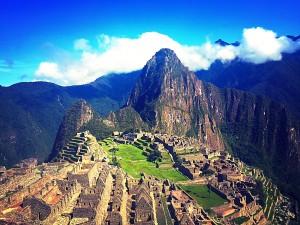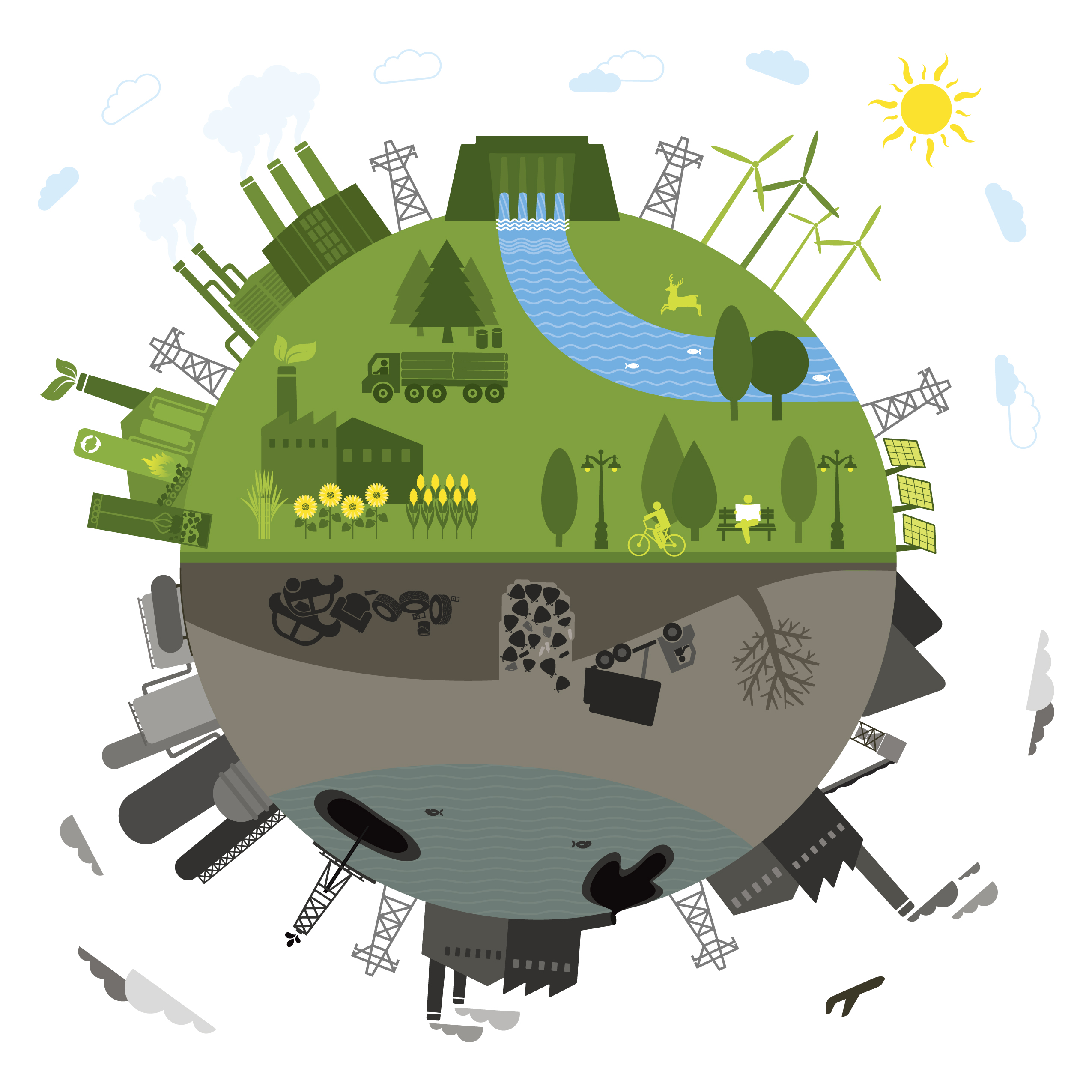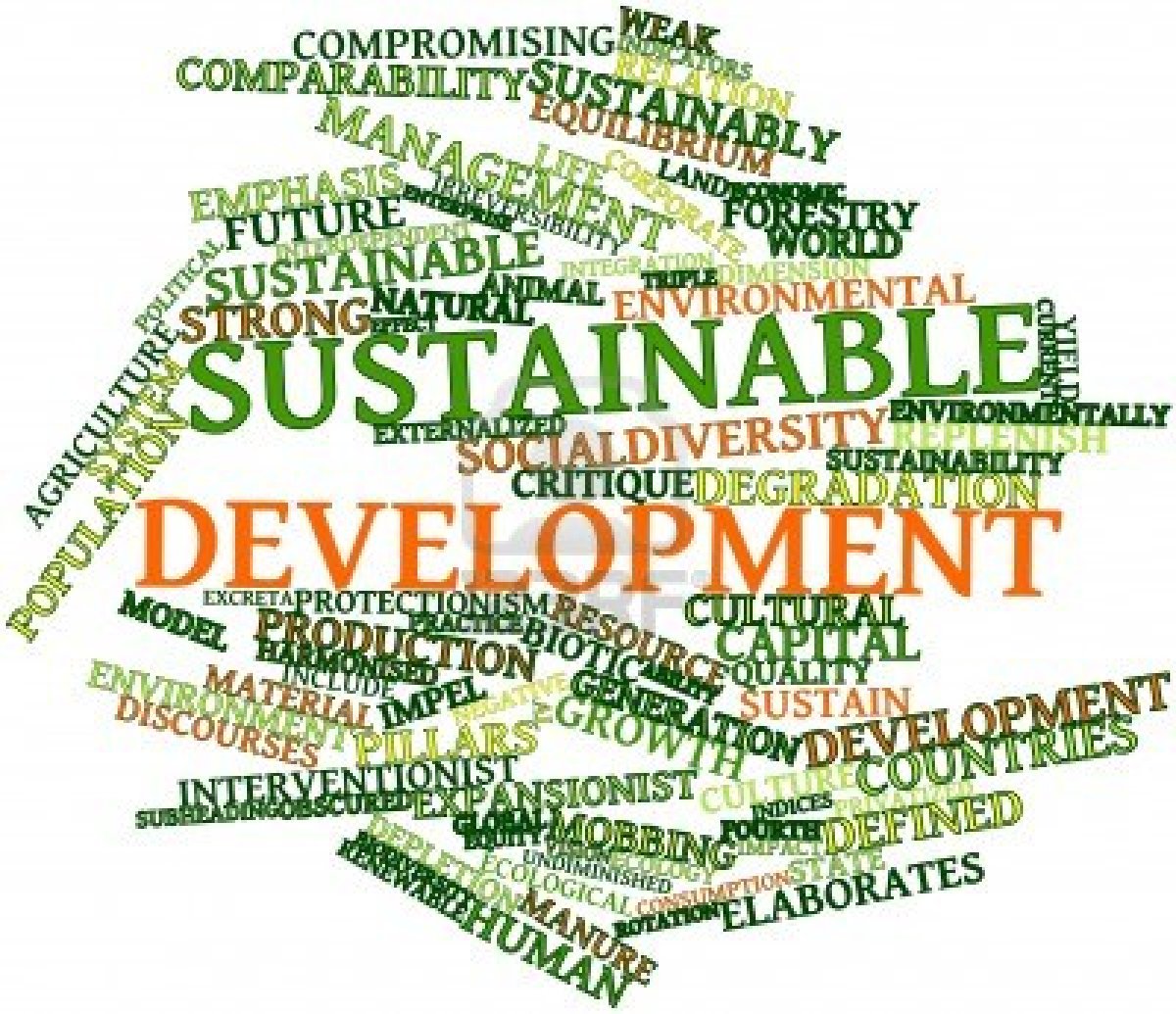President John F. Kennedy once remarked that, “when written in Chinese, the word ‘crisis’ is composed of two characters; one represents danger, and the other represents opportunity.”[1] The crisis of climate change poses many threats to the current global economic status quo, especially as many nations are developing at a rapid rate of speed. Their predecessors, the developed nations, experienced growth under the mantra of “grow fast, clean up later;”[2] this second group of nations, however, doesn’t have that same luxury due to the threats posed by climate change. But, while it poses threats to the old economic ways and development paths already taken, there are also a plethora of opportunities presented through the climate crisis, which could carve a new development path that is more economically, environmentally, and socially sustainable.
The current system at the core of the global economy emerged as a result of the development paths taken by the Annex-I nations, which gave very little weight to environmental costs and degradation; this economy is still the one currently installed. Central to its philosophy and functionality is a “growth fetish” or “growth imperative”[3] that places absolute focus upon GDP and whether or not it is increasing as the main indicator for development and growth. However, GDP doesn’t represent the full picture of economic growth, as it doesn’t indicate whether there is a fair or equitable distribution of benefits or an increasing or decreasing environmental quality. These two factors are an inseparable part of the threats climate change poses to society, and, if not taken into account as economies grow, could lead to “a lot of people [being] poor and polluted – the worst of all possible worlds.”[4] With uncontrolled economic growth as has been seen historically, the world and global economy will be a great departure from what is currently enjoyed, with higher social inequality, lower environmental quality, and potentially severe climate change, all of which will make sustainable development increasingly more difficult to achieve.
Without making drastic changes to the current economic system and philosophy in response to the threat of climate change, sustainable development will be out of reach for developing countries. The effects of anthropogenic climate change will directly and negatively affect many of the essential drivers of sustainable development, namely food, water, and infrastructure, among others.[5] These pose considerable economic threats to emerging and developing economies; it was estimated that the “total annual damage to China’s economy from environmental degradation is the equivalent of 9% of GDP…[and] bad sanitation and water pollution cost India 6% of national income,”[6] to name a few examples. That is a crippling cost for an economy to absorb year after year, and, if perpetuated and extended, would have the potential to halt any growth that nations plan to achieve in the future.
However, there are numerous beneficial opportunities for sustainable development that arise in response to the threats posed by the climate crisis. These opportunities must be taken in light of the new economic reality that all future growth and development must be sustainable and sensitive to its effects upon the social, environmental, and economic systems in play. A green economy, as described above, is “characterized by substantially increased investments in economic activities…such as renewable energy, low-carbon transport, energy- and water-efficient buildings, sustainable agriculture and forest management, and sustainable fisheries.”[7] All of these create good jobs and increase investment in local, regional, and national economies, while also establishing environmentally-friendly and sustainable infrastructure that will have impacts for its entire lifespan. Infrastructure plays a major role in the future of the economy and the scale at which sustainable development is achieved; “about two-thirds of the $8 trillion need for infrastructure investment in Asia and the Pacific between 2010 and 2020 will be in the form of new infrastructure, which creates tremendous opportunities to design, finance, and manage more sustainable infrastructure.”[8]
This is a defining characteristic of green growth, as it, by definition and in practice, “means looking for investment-hungry projects that bring high returns in broad environmental and narrow commercial terms.”[9] Green growth or sustainable development policies incentivize the private sector to innovate and discover even better and more sustainable methods in order to maximize their profits and market share. In effect, this allows for economic growth to be sustained over time, while also protecting and increasing the value of the environment as an asset for future generations. As the Stern Report declared, “tackling climate change is the pro-growth strategy for the longer term, and it can be done in a way that does not cap the aspirations for growth of rich or poor countries.”[10]
[1] Kennedy, John F. BrainQuote.com, Xplore Inc, 2014. http://www.brainyquote.com/quotes/quotes/j/johnfkenn103820.html, accessed November 2, 2014.
[2] “Shoots, greens, and leaves.” The Economist, June 16, 2012, accessed November 2, 2014. http://www.economist.com/node/21556904.
[3] Speth, James Gustave. “A New American Environmentalism and the New Economy.” Lecture, Tenth Annual John H. Chafee Memorial Lecture on Science and the Environment from the National Council for Science and the Environment, Washington, DC, January 21, 2010.
[4] “Shoots, greens, and leaves,” The Economist.
[5] United Nations and Asian Development Bank. Green Growth, Resources, and Resilience: Environmental Sustainability in Asia and the Pacific. Accessed 9 October 2014. http://www.unep.org/dewa/Portals/67/pdf/G2R2_web.pdf.
[6] “Shoots, greens, and leaves,” The Economist.
[7] United Nations and Asian Development Bank, Green Growth, Resources, and Resilience: Environmental Sustainability in Asia and the Pacific. xv.
[8] United Nations and Asian Development Bank, Green Growth, Resources, and Resilience: Environmental Sustainability in Asia and the Pacific. xviii.
[9] “Shoots, greens, and leaves,” The Economist.
[10] Stern, Nicholas, “The Stern Review on the Economic Effects of Climate Change,” Population and Development Review 32 (2006): ii, accessed November 2, 2014, doi: 10.1111/j.1728-4457.2006.00153.x.










